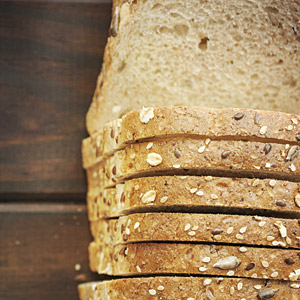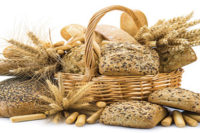Walking through the grocery store recently, I overheard a conversation between two people going through their shopping list. “All we are missing is some protein,” said one patron to the other. As I watched them walk toward the meat section, it dawned on me that terms once used only by nutritionists and scientists have become a part of mainstream American lingo.
It’s interesting how we categorize food at the macro level when there’s so much more being offered from a nutritional standpoint. Vitamins and minerals referred to as micronutrients have the same dietary significance, but are rarely the focal point of the average American diet. It’s very rare, if not unheard of, to find “iron” or “folic acid” on someone’s grocery list outside of the context of dietary supplements. Vitamins and minerals are critical components of the human diet and pack enough punch to prevent disease, help ensure a healthy pregnancy and improve overall health.
Luckily, nutritional safeguards like enrichment and fortification have been implemented in the U.S. to ensure that consumers are able to meet their daily needs for vitamins and minerals through everyday foods and with minimal thought.
The grains industry has long understood the significance on public health of both processes and implemented both with great success. To replace the nutrients lost in the milling process, the industry has been voluntarily enriching white flour with iron and B vitamins (niacin, riboflavin and thiamine) since the 1940s.
According to the World Health Organization (2006), fortifying foods with micronutrients is a valid technology for reducing micronutrient malnutrition as part of a food-based approach and reinforces and supports ongoing strategies to improve health programs. One impressive example is the folic acid fortification of enriched grains to help reduce the incidence of birth defects like spina bifida in the U.S. Folic acid consumption is critical for the prevention of neural tube birth defects that affect the brain and spinal cord. Since the Food and Drug Administration (FDA) required fortification of enriched grains with folic acid in 1998, the number of babies born in the U.S. with neural tube birth defects has declined by approximately one-third.
In fact, this reduction is so impressive that the Centers for Disease Control and Prevention acknowledges enriched grains, rather than supplements, as responsible for lowering the rate of neural tube birth defects and names folic acid fortification of enriched grains one of the top 10 public health achievements of the first decade of the 21st century.
Despite this, according to a recent national survey conducted by Harris Interactive, only 48% of Americans are aware that actionable steps like dietary changes can improve birth outcomes. And only 28% of Americans consider folic acid intake when making food selections. It’s this lack of awareness about the power of micronutrients that is behind the rationale for fortification. So, although I am grateful that we have such procedures in place, there’s clearly more work to be done.
The Grain Foods Foundation (GFF) is dedicated to spreading the news and creating awareness about the important role micronutrients present in grains play in overall health and disease prevention. We are now in our third year of partnership with the Spina Bifida Association, an organization dedicated to enhancing the lives of those with or touched by spina bifida, to remind all women of child-bearing age of the important role that folic acid plays in preventing neural tube birth defects with educational materials. Together, we have produced “The Bread Trail” public service announcement to reach viewers in select broadcast markets. We have also created a visually pleasing and highly shareable infographic that illustrates how folic acid-fortified enriched grains make a difference in the lives of moms and babies in the U.S. These resources and other educational tools can be found on our website, GrainsforyourBrain.org.
It is our job as an industry member to provide not only nourishment to American consumers, but meaningful education as well. I encourage you all to join us in the spreading the word about the very important role vitamins and minerals play in our diets. With our efforts, we hope that grocery shoppers will soon be categorizing our products by their nutritional function.
Christine Cochran, executive director of the Grain Foods Foundation (GFF), is past president of a Washington-based trade association representing commodity futures exchanges and exchange participants. She also has worked extensively with lawmakers, regulators and other associations, as coordinator for the Alliance for Agricultural Growth and Competitiveness and as the agricultural section co-chair for Women In International Trade.




